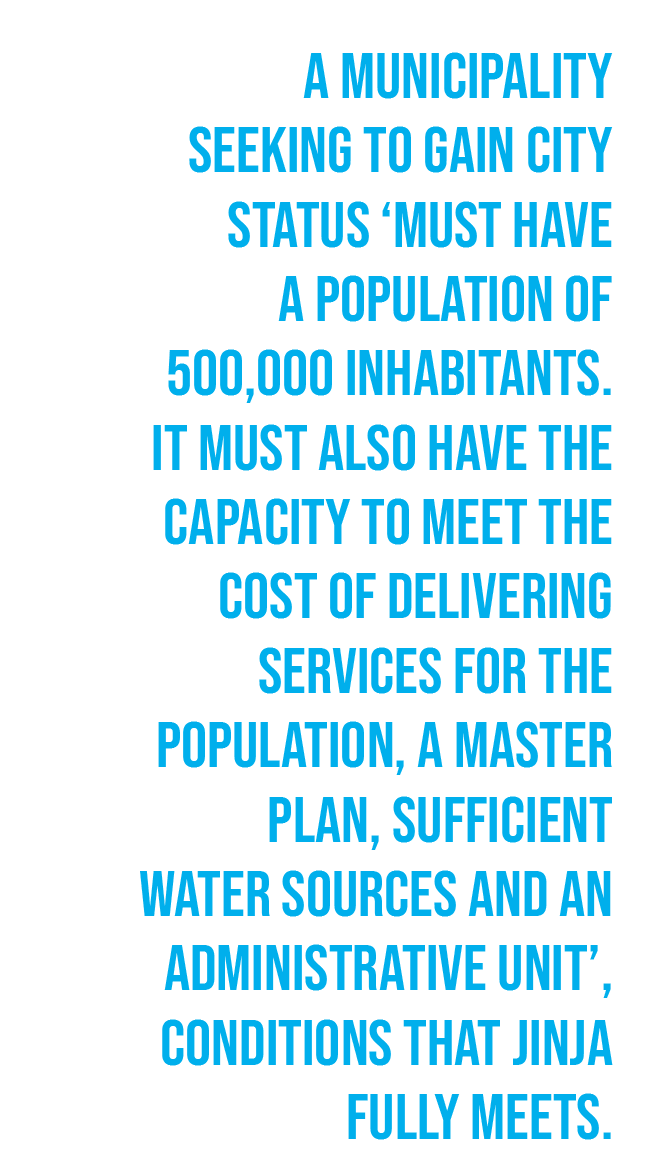Pillar 9
Urban and Human Settlement
Policy Shift
Undertake an urbanisation agenda with a human face to drive innovations, enterprise development and economic prosperity.
Intervention 15: Developing Jinja into an Economically Viable City
Interventions 16: Expanding Urbanisation through a Low-cost Public Housing Programme
The Busoga sub-region has the highest population density in the country, with the total number of people per square kilometre (population density) currently standing at 397 against a national average of 173. With this high population density, coupled with an average household size of 5.1 persons, Busoga is fairly overcrowded. To realise organised urbanisation in Busoga’s towns, municipalities and cities as well as create land for mechanisation, the Busoga Consortium is routing for the establishment of a low-cost public housing programme in the three municipalities of Bugiri, Iganga and Kamuli and the city of Jinja. The low-cost housing scheme will be a partnership involving the central government (providing guarantees and amenities), local governments (identifying and providing land) and the private sector (financing the scheme). This scheme will also alleviate the constraints on the rapid unplanned urbanisation in Busoga’s urban centres. The Consortium is targeting 4,000 housing units that will be provided to low-income earners whose annual income is below UGX 40 million on mortgage terms over a period of 20 years.

